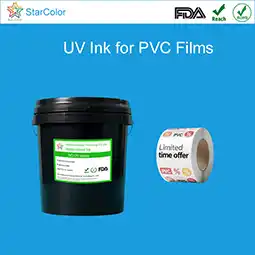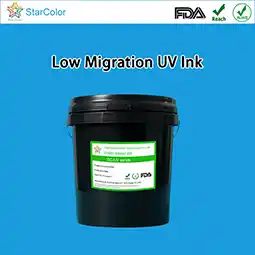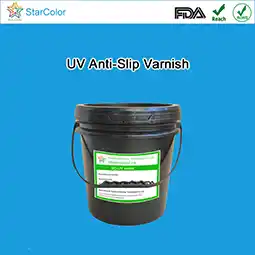Buyer Guide: What to Watch When Selecting Eco-Friendly Gravure Inks
Date: Nov 12 2025 From: Star Color Views:
With the advancement of “dual-carbon” goals and tightening of environmental regulation (such as China’s GB 38507‑2020, and the EU 10/2011), eco-friendly gravure inks have become a core requirement for flexible packaging and food packaging printing. However, in the market, terms like “low VOCs” and “food-grade” are used inconsistently: some products meet basic eco standards but fall short in technical compatibility or stability, causing printers to face issues like “compliant but inefficient” or “cheap but high waste.” For gravure printers, choosing eco-friendly gravure ink must balance four major dimensions: compliance baseline, technical fit, cost control, and service & supply reliability. This article provides a professional selection guide from those key dimensions.
1. First Prioritize the Compliance Baseline: Certification & Standards
The “compliance” of eco-friendly gravure ink is not a single number—it must match the application scenario (e.g., food contact). Key issues to pay attention to:
1.1 Match the Standard to the Application
- General environmental requirements: Regardless of food contact or not, inks must comply with China’s GB 38507-2020 “Limits of volatile organic compounds (VOCs) in printing ink”. This standard sets VOC content limits for inks. :contentReference[oaicite:2]{index=2}
- Food-contact scenarios: Inks for food contact must meet migration and heavy metal limits. For example, total migration ≤10 mg/dm², heavy metals such as lead/cadmium limited to low mg/kg levels. For export to EU/US, you need testing per FDA 21 CFR 175.300 or EU 10/2011. :contentReference[oaicite:3]{index=3}
- Export regions: For example, exports to India require BIS certification; to the U.S., California’s Prop-65 phthalate limit ≤0.1% is relevant; for Southeast Asia, local standards like TISI/MALAYSIA SIRIM may apply.
1.2 Verify Authenticity and Currency of Certifications
- Check that the testing report is from accredited labs (CNAS/CMA in China; SGS/UL internationally) and covers key indicators (VOCs, migration, heavy metals) rather than just physical specs.
- Ensure the certificate is within validity (preferably within 12 months) and is specific to the ink batch/product you plan to buy.
2. Target Technical Fit: Match Gravure Process & Application Scenario
Gravure printing is characterised by high speed, large coverage, and thick ink layers (commonly 200-300 m/min). An eco ink must fit the equipment, substrate and speed; otherwise waste and defects will rise.
2.1 Core technical parameters to align
- Viscosity & rheology: Gravure ink viscosity should typically be ~25-35 s (Zahn cup #4 @25 °C); the ink should remain stable (no sedimentation or separation) after 24 h. A thixotropy index of 2.0-3.0 is preferred so high-speed doesn’t cause splatter, and stops don’t cause sagging.
- Drying/cure speed: For water-based eco gravure inks: matching “hot air + infrared” drying systems is key. Example: 40-60 °C drying to tack-free in 2-3 s, full dry (moisture ≤2%) in 5 s. For UV eco inks: match LED-UV systems with cure energy 80-120 mJ/cm², cure in ≤0.5 s, and no residual ozone.
- Substrate adhesion: On non-absorbing substrates like BOPP/PE/foil, cross-cut adhesion should reach 4B–5B (≤5% removal). On foil/metallised films, a dedicated adhesion promoter may be needed to prevent delamination after steaming or freezing.
2.2 Reinforce scenario-resilience for food contact where required
- Oil-rich foods: resistance grade per ASTM D1653, oil penetration level 5 (e.g., immersion in 10# engine oil for 24 h, no penetration).
- Hot food or hot fill (70-80 °C): ink must sustain ≥80 °C for 30 min with no softening.
- Acidic foods: 3% acetic acid immersion 24 h, no blurring.
- Frozen foods: -20 °C cold storage for 24 h, then thawing with no cracking or decolourisation.
3. Calculate the Total Cost: Avoid the “Cheap Trap”, Focus on Comprehensive Value
When buying eco gravure ink, don’t just look at price per kg. Consider the full cost including ink usage efficiency, waste rate, testing cost, and required environmental equipment.
3.1 Beware of “low-price & low-solid content” traps
- Some vendors use “low VOC” as a selling slogan but cut solid content (e.g., from 45% to 30%), which leads to: (i) higher ink consumption (use increases >30%), (ii) slower drying/production speed. Prefer ink with solid content 40-50% — slightly higher price, but lower consumption and better economy.
3.2 Include hidden costs in cost calculation
- Testing cost: compliant ink may cost $150-300 per batch; non-compliant may lead to rework & retest cost thousands <$USD$.
- Waste cost: a poorly adapted ink may waste 10-15% of production; a well-adapted ink may limit waste to ≤3%. For example, for 1 million m² output, saving >$5,000 in materials & labour.
- Environmental equipment cost: high-VOC ink may require RTO incinerators (annual operating cost >$30,000); low-VOC water-based ink may only need simple carbon adsorption (~$2,000/year).
3.3 Focus on cost-effective export-brand options
For exporters, Chinese brands such as StarColor by zhongzhixing offer strong cost performance: e.g., VOCs as low as ~10 g/L, compliance with FDA/EU 10/2011, price ~20-30% lower than Western brands, and they offer export documentation (SDS, origin certificate) and lead times 2-3 weeks.
4. Secure Service & Supply Chain: From Technical Support to Reliable Supply
The quality of service from the ink supplier greatly affects production efficiency. Focus on three key service dimensions:
- Customisation & tuning service: Good suppliers provide tailored colour matching (ΔE≤0.8), small-batch trials, on-site commissioning (e.g., select 1200 lpi gravure cylinder for fine print, optimise drying parameters) to reduce waste.
- Supply chain stability & emergency response: Supplier should have annual capacity ≥5,000 t, stable sourcing of core raw materials (eco-resins, pigments), 7×24 support, and for exports – full export credentials and quick turn logistics.
- Traceability & after-sales warranty: Each batch must have batch number, date, test-report number; supplier provides 12-month quality guarantee and stands behind rework/testing cost if non-compliance issues are caused by ink quality.
5. Selection Process Summary: Four-Step Lock-In for Quality Ink
- Standards verification: List required standards by scenario (food-contact / export region), request test reports, check authenticity.
- Trial test: Purchase 5-10 kg samples, run on your gravure machine—check viscosity, drying speed, adhesion, durability performance.
- Cost analysis: Compare alternatives using “unit price + usage per m² + waste rate” to find best value rather than lowest price alone.
- Service assessment: Evaluate supplier’s custom-service, supply reliability, batch traceability – choose brand that offers “technical + supply chain” dual assurance.

Conclusion
Selecting eco-friendly gravure ink is guided by the logic of “compliance as base, fit as key, cost controllable, service reliable”. For printers, don’t blindly chase lowest cost or single environmental metric—match your equipment, substrate, printing speed and packaging scenario. As eco-technology matures, brands like StarColor by zhongzhixing that bring compliance, fit and value together are becoming global printers’ preferred choice. A scientific selection process will help your company achieve dual goals of “cost reduction & compliance upgrade” in the green transition.
 RU
RU EN
EN CN
CN















